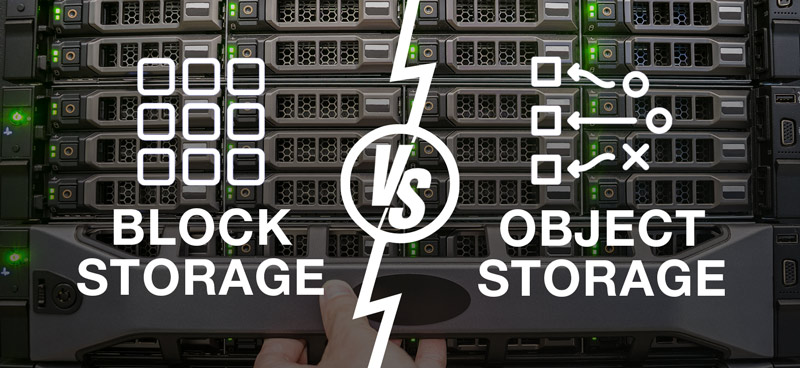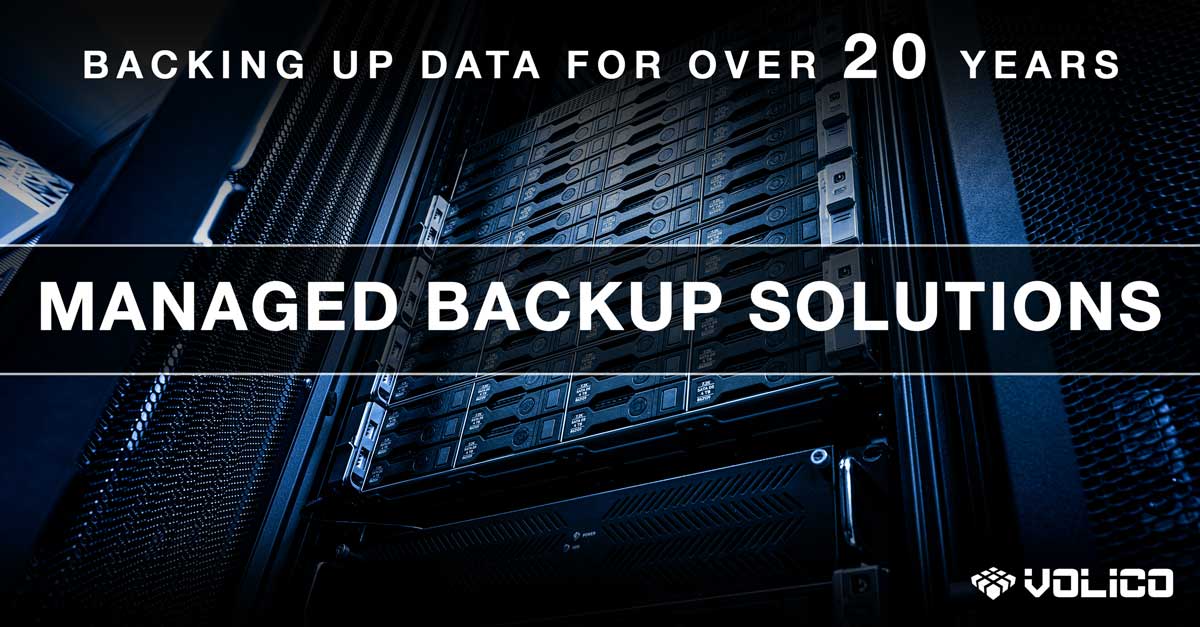Object storage and block storage are types of cloud data storage that provide specific ways of managing data. The two have been designed to be suitable for storing different kinds of data, depending on the need for speed, accessibility, and workload of a business. The types of technologies for storage play different roles in different frameworks; therefore, comparison can only happen while keeping in mind that their uses are completely different. Both have benefits and limitations and understanding the differences is crucial for making optimal data management decisions.
So, which one to choose, object storage or block storage? In this article, we are going to break down the core aspects, and in addition, we will also discuss some cases of use. Stick around to learn the basics of these two types of data storage and management.
What is object storage?
Let’s start at the beginning. Object storage is a type of data storage that presupposes the existence of an object. Any type of file can be identifiable as an object, which can be organized and manipulated as a definite unit.
Components of an object
All objects have four essential parts, which make them recognizable in the data pool when retrieving. The first component, the ID, lets us do just that: it makes locating the object in the data lake easy. The second component is the data itself. Having an object file without the data would be, of course, useless.
The third component is metadata, which tells you all the contextual information there is to know about the data and the object. Metadata provides information about the size and type of the file, the date of creation, and the creator as well. Additionally, metadata makes searching and finding the file possible, facilitating their retrieval.
The last component of an object is its attributes. Attributes are somewhat related to metadata, and they specify, for instance, if a user can or can’t download it. However, the attributes refer to the object itself and not the data it contains.
How does object storage work?
Object storage works with a flat file system instead of the more traditional hierarchical file system. This system keeps all files as self-contained units in repositories called buckets, which store the contained objects on the same level.
Object storage is the most efficient way of storing large amounts of unstructured data. Unlimited scalability is its main advantage. Since the objects are self-contained units, retrieving large data volumes can happen quickly.

What is block storage?
Block storage is a traditional type of storage with a specific use that makes it different from the newer object storage. Block storage divides data into independent units named blocks. Each of those blocks contains part of the information and has a unique identifier. Retrieving data from block storage works similarly to assembling a puzzle with numbered pieces. The information is divided into equal-sized elements, and the identifier helps reassemble the scrambled pieces in the correct order.
How does block storage work?
Whether on-premises or in the cloud, block storage is highly efficient. Blocks can be easily moved around on disk, or, in the case of the cloud, it’s possible to move them around between clusters and across multiple environments.
Block storage, as opposed to file storage, for instance, doesn’t rely on a single path of data. This enables quick retrieval when requested. The autonomous blocks can be partitioned, allowing the user to configure the data as they wish to access it in different operating systems.
Mounting the data back together when requested happens with the help of the underlying software. This can happen in a storage-area network (SAN) and requires a connection to a functioning server.
Block storage makes it easy to manage data while also being an efficient and safe medium of storage. Its main advantages reveal themselves best in the enterprise environment when deploying enormous databases and performing transactions. It is a fast option that works best with structured data.
The main differences between object storage and block storage
To sum up the differences between object storage and block storage, let’s take a look at them from a few points of comparison.
Method of storage
• Object-based storage stores the data in distinct, unique units called objects. The objects are stored in buckets in a flat-file system.
• Block-level storage splits the data into fixed-sized blocks and stores them in a hierarchical system.
Method of retrieval
• Object-based storage retrieves data with the help of the unique ID and the metadata. In the case of object storage, the metadata is unlimited and customizable, containing contextual information about the data.
• Block-level storage retrieves files with the help of a data lookup table, reassembling the data from the multiple blocks it has been split up into. In this case, the metadata contains only basic information.
Performance
• Object-based storage is best suited for dealing with high volumes of unstructured data and large file formats.
• Block-level storage is best suited for structured data, transactional data, and database storage. It is best for small format files.
Location
• Object-based storage can happen in a centralized or dispersed system, storing data on-premise or in any kind of cloud.
• Block-level storage is a centralized system that stores data on storage area networks (SANs) or, usually, in a private cloud.
Scalability and cost
• Object-based storage offers unlimited scalability and a relatively low price.
• Block-level storage offers limited scalability and tends to cost somewhat more.
When to use which?
Depending on the architecture and the scope of use, object storage and block storage have entirely different uses. Eventually, its use will shape the future of both object and block storage. Let’s take a look at the most popular ones.
Object storage use cases
All kinds of media files. Object storage is great for storing large volumes of graphics, videos, images, or audio files. It is excellent for hosting videos for streaming over the internet. Hosting those videos across several storage places decreases latency for the users, allowing for a better experience.
Storing medical records. Medical files frequently contain large-size files, like X-rays, 3D, and MRI scans, for which object storage is the perfect option. Moreover, object storage is also used as a great option for increased data security. Some solutions have HIPAA Compliance by default as well.
• Object storage creates a copy (version) of the files after modifications. Those versions can work as backups in case of a security attack.
• File sharing in coworking environments, collaboration tools, PowerPoints, and spreadsheets. It is great for collaborations across the world because it allows people to make changes to the same file.
• Archiving. Object storage is an excellent choice for archiving, where the file is created once and accessed afterward from time to time. It works best with files that are not updated frequently.
• Big data. Thanks to the highly customizable and unlimited metadata, access to vast amounts of data is possible, facilitating machine learning. Object-based storage is great for working with large amounts of unstructured data.
Block storage use cases
• Its low latency, fault tolerance, redundancy, and consistent I/O performance make block storage the best option when it comes to resource-intensive applications. This makes block storage the most suitable for database storage.
• Block-level storage is perfect for applications that need service-side processing, like Java, PHP, or .Net.
• The fast performance and low latency characteristics of block storage make it a popular choice for storing mission-critical applications and data.
• Thanks to Block storage, it is often employed with RAID volumes as well.
• Another use of block storage is managing container storage. It works well with Kubernetes or Docker containers, working by taking the data from the lifecycle of the container and distributing it to continuous, fixed-size storage.
Conclusion
When it comes to choosing between object storage or block storage, the purpose of use will determine which one will work best. Both solutions offer unique advantages for the specific uses they have been created for. At the end of this breakdown, let’s take a quick look again at the most characteristic differences between the two.
Object storage works best with large volumes of unstructured data. The main benefits of object storage are efficient metadata management and unlimited and easy scalability, although unlimited storage and the possibility of not updating very frequently are also advantageous aspects.
Block storage, on the other hand, is the best option for structured data storage and management. Block storage offers high performance and low latency, proving efficient for the storage and management of databases. Moreover, it is often chosen for VM file system volumes and read and write loads.
If you want to learn more about data storage and how data centers like ours can help you find the right solution for your needs, contact us at Volico Data Centers. Depending on your backup requirements, the type of files you’re working with, and your workload in general, there’s an optimal solution waiting for you.
• Call: (305) 735-8098
• Chat with a member of our team to discuss which solution best fits your needs.














